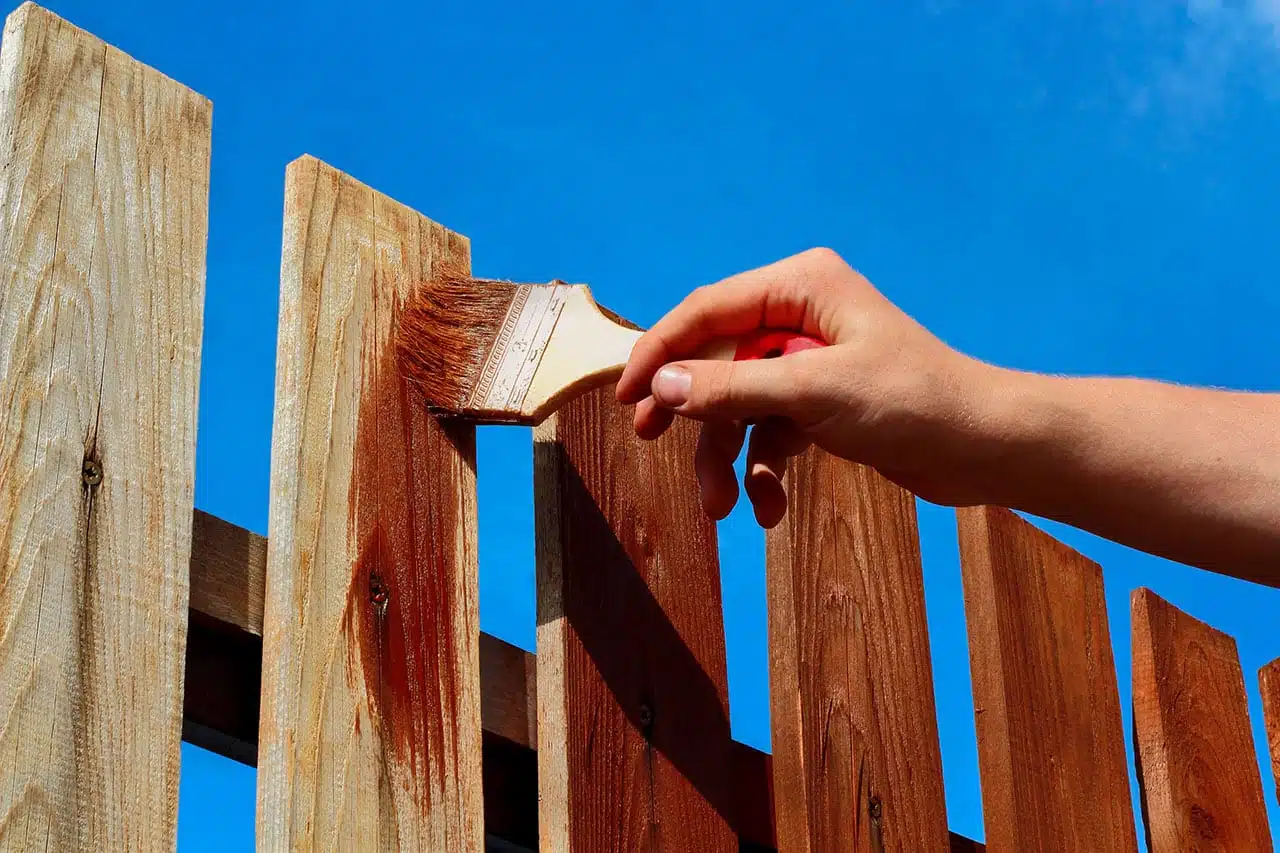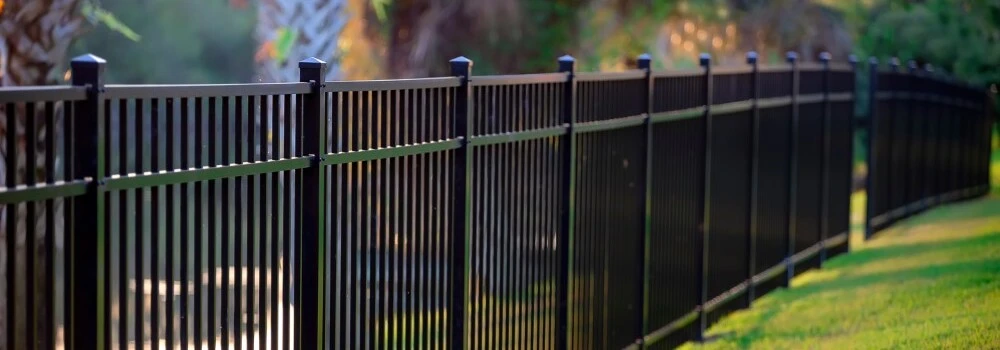
The Best Way to Preserve a Wood Fence
Wood fences can be a thing of beauty. With all the variety of styles and colors, they can be a perfect accent to your home. But maintaining them at their full glory can be tricky! So what is the best way to preserve a wood fence? There are several steps you can take to protect and preserve your wooden fence.
Keep Your Fence Fresh
Wood fences, like most materials, require maintenance. If you’re looking for a fence that requires minimal maintenance, then you should consider a vinyl or chain-link fence. But if you already have a wood fence that you want to get the most out of, maintenance is key.
The first step to take to preserve a wood fence is to keep it clean. For naturally finished woods, keeping dirt and grime off allows the wood to “breathe”. Therefore, plan on annual power washes, with a maximum pressure of 1,500 to 2,000 psi. This will strip months of weathering from the fence and safeguard it from rot and mold.
However, if you powerwash your wood fence, be sure to avoid more powerful machines. These can scour too aggressively and cause gauges to form. Opt for both a 25- and 15-degree tip. While the 25-degree point is recommended for general cleaning, the 15-degree tip is for addressing problematic or hard-to-reach areas, like removing the discoloration around the fence’s latches and other hardware.
Your fence may also require some light sanding. After your annual power wash, inspect the fence for rough patches or broken wood. Smooth rough surfaces with sandpaper. This is also an opportunity to replace nails that have popped out. Secure loose boards with additional nails
or screws, using aluminum or stainless steel nails or screws that won’t rust and discolor the fence.
Smart Fence Sealing
The next step as you preserve your wood fence involves filling and sealing it. If you neglect large cracks in your wood fence, mold spores and rot can set in. Filling those crevices with epoxy is an easy fix that will protect your fence.
First, you will need to clean the cracked area with a wood-safe cleaner. Next, mix the epoxy according to the directions on the box and apply the mixture to the cracks. Finally, let the epoxy set as instructed in the product directions. In fact, for best results, apply the epoxy on a dry, sunny day so that the mixture can adequately set and cure.
Because wood fencing is a natural product, it contains a plethora of microorganisms, oils, and moisture levels that need to be exposed to keep the wood from decay. By sealing the planks of wood with a clear sealant, you’re robbing them of that need. A clear-sealed fence will decay far quicker than a properly treated and maintained one because it will prevent the wood from “breathing.”
You need to protect your wooden fence from harmful UV rays without the risk of rot. Thus, consider painting with a breathable, waterproof exterior paint. You can also brush or spray on a water-repellent preservative or sealant to protect the wood from rain and moisture. Focus on joints and parts of the fence near the ground.
After you’ve sealed, sanded, and protected your fence, it’s time to stain or paint it. Choose a product made for the outdoors that contains a water-repellent or preservative chemical. Therefore, you won’t have to apply a separate water-repellent product. In fact, staining wood will help your fence look its best while helping it fight the elements. When applied correctly, the stain will repel water and protect the wood from over-drying and falling apart.
When staining, always remember to start on the lighter side. You can always choose to darken the area with multiple, thinly applied layers. Applying several thin coats will ensure that the stain doesn’t appear darker than you anticipated. The general rule is that wood fences should be stained every five years, and sealers should be applied every two to three years.
Preventing Damage
Pests
Termites, also known as white ants, are destructive pests that can eat away and destroy a wood fence. Softwoods such as redwood, pine, fir, and cedar are all most susceptible to termite infestation. Unfortunately, those are the types of woods most likely to be used for fences. Termites can be exterminated by a professional service, but you can also treat your fence yourself using borax, a natural insecticide. Borax is also much less toxic than alternative insecticides.
Rot
As with all maintenance tasks, your best plan of action is to prevent any damage in the first place. You can’t prevent rain and snow from soaking your fence, but you can prevent the moisture from penetrating the wood. Therefore, have a weatherproof stain applied to your fence when it’s first installed. You should re-stain the fence periodically, as instructed above.
Next, keep plant life away from your fence. You should never train plants to grow onto your wood fence because they create damp spots. Additionally, your landscaping shouldn’t grow directly against the fence either.
If you feel your fence is especially susceptible to rot, consider treating it with borate. Borate is a fungicide that’s safe to apply to wood and is also safe for humans and animals, so you can spray the solution right onto the fence.
Should rot start to appear in your fence, you can stop its spread by replacing the affected sections. It’s most likely that you will be replacing the fence’s main posts. Since it is your fence posts that touch the ground, this is where rot often begins.
It is important to replace fence planks and posts at the first sign of rot, as rot can spread quickly.
When replacing rot-affected sections, the best protection from rot gives the rest of your fence a good clean and a new coat of stain too!
Durability
If you have your mind made up to install a wood fence and you want to preserve your wood fence, you should consider options for durability. What type of wood fence will last the longest? Cedar fences typically last the longest. When well maintained, they can generally last about 15 to 30 years. Cedar is naturally resistant to insects and slow to rot, making it more durable. If treated, cedar fences can even last up to 40 years.
However, if you’re interested in the look of a wood fence without all the maintenance, then you should consider a viny fence. Vinyl fencing can last 30 or more years with minimal maintenance required. Unlike wood that can warp, rot, or shrink over time, vinyl fences stay essentially the same.
Whether you are installing a new wood fence or caring for one that’s already on your property, the key to a long-lasting fence is regular inspections, maintenance, and minor repairs and replacements as needed. Follow these steps to preserve a wood fence and you’ll enjoy yours for many years to come!

